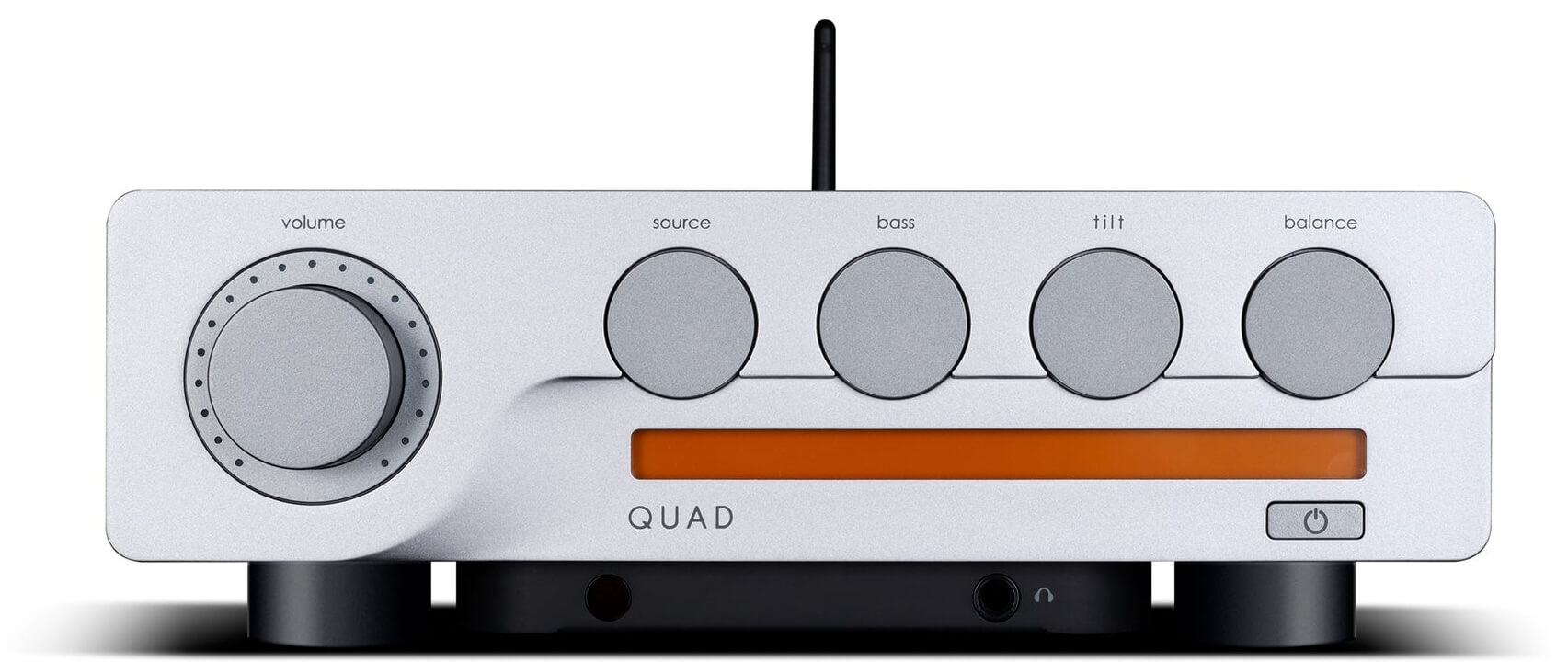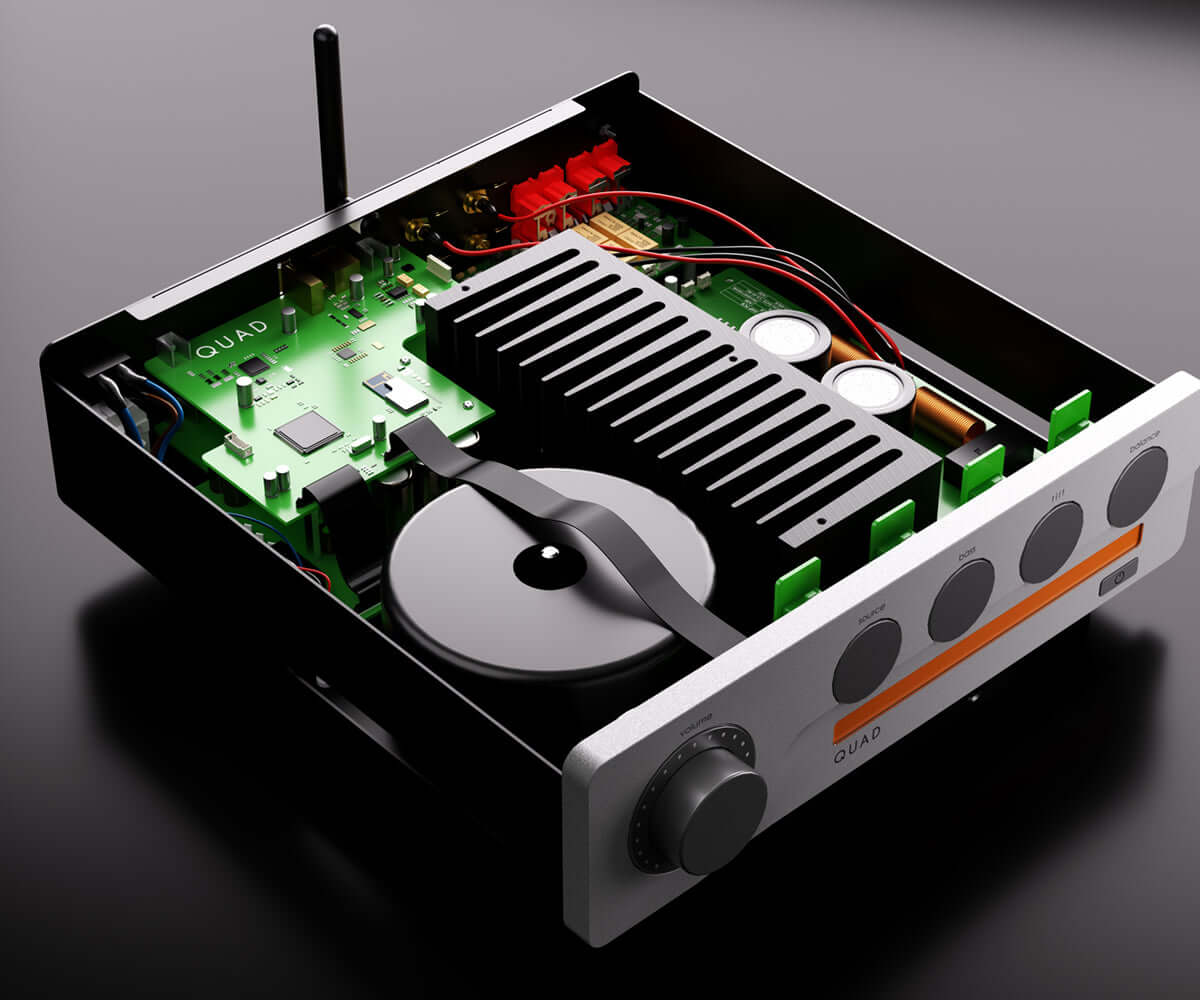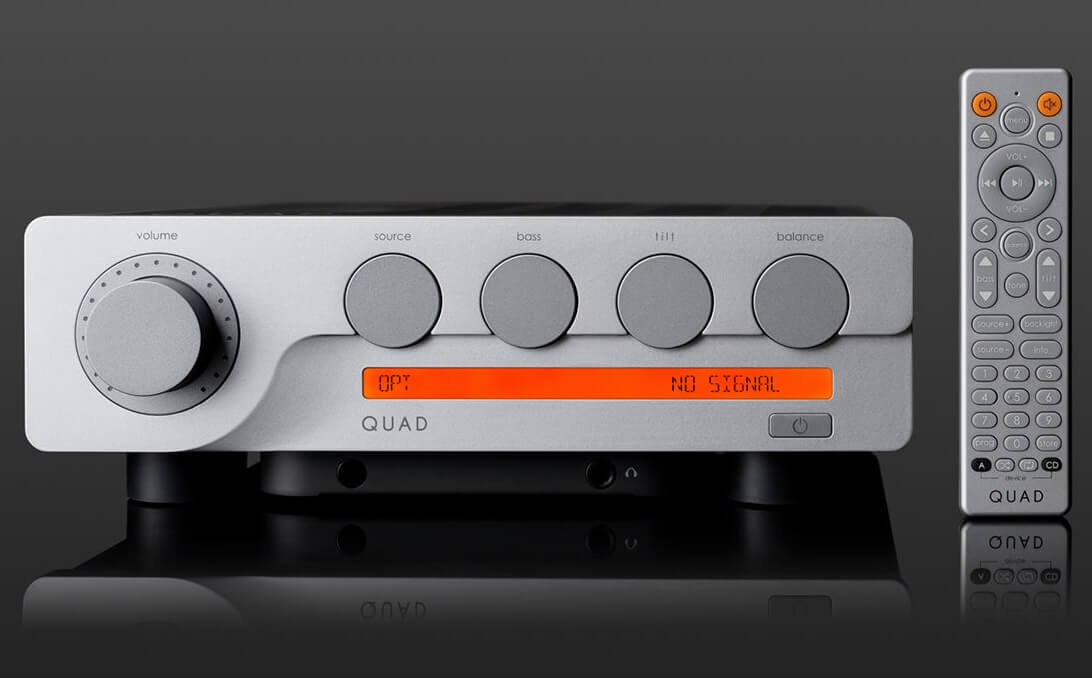Quad has officially pulled the curtain back on the new Quad 3 integrated amplifier—a slickly retro-styled unit that looks straight out of a 1960s bachelor pad, but under the hood, it’s packing decidedly modern muscle.
We first laid eyes on the Quad 3 at High End Munich this past May, where it was parked next to its two-box siblings, the updated 33/303 combo. At first glance, it might seem like another nostalgia play, but there’s more going on here than just vintage charm.
Rated at 65 watts per channel into 8 ohms, the Quad 3 uses Class A/B amplification and employs Quad’s “Complementary Feedback” topology. That’s not just brochure fluff—it’s designed to deliver better linearity and keep things cool under pressure. Each major section of the amp gets its own low-noise power supply, a move aimed at tightening detail and expanding the soundstage.
So yes, it may look like something you’d find under a lava lamp, but it’s built to hold its own in a modern hi-fi rig.
Quad Revives Classic Design with Modern Engineering in the New Quad 3 Amplifier
Quad didn’t just wake up one day and decide to slap a vintage badge on some modern gear—the resurgence of interest in the classic 33/303 duo was impossible to ignore. These amps, discontinued in the 1980s, have been holding their own on the secondhand market for decades, with prices and demand refusing to die. That level of staying power doesn’t go unnoticed, especially when it’s your own legacy people keep chasing.
So, when it came time to revisit the 33/303, Quad took it seriously. Not a retro cash grab, but a careful design resurrection. They tapped an all-star internal team out of their Huntingdon, Cambridgeshire HQ—Jan Ertner (the brains behind the electronics for both Quad and Audiolab), longtime service vets Rob Flain and Paul McConville, and David McNeill, the industrial design lead who’s been shaping Quad’s look for the past 20 years.
Rather than try to reinvent the wheel, McNeill played the long game: evolve, don’t overwrite. The new 33 preamp keeps the same compact footprint as the original, but the detailing has been smartened up. The casework has gone from ‘granddad taupe’ to a more refined matte silver, and while the control layout still features that iconic asymmetry—volume on the left, three flush rotaries on the right—the functions underneath those knobs have been modernized.
Crucially, the original orange flair is still there, but now it glows with LED backlighting. The white buttons are gone; everything’s orange and illuminated. The classic orange strip above the controls now even has a discreet LCD tucked in, offering modern feedback without trashing the retro vibe. It’s all subtle enough that it feels like what the original 33 would have looked like in 2024 if LCDs and infrared remotes had existed in 1967.
And yes, there’s now a 6.35mm headphone jack and an IR sensor for the remote—because even vintage purists like to turn the volume down from the couch.
All of this thoughtful modernization laid the groundwork for the new Quad 3 integrated. It carries forward the design language and DNA of the reborn 33/303 while standing on its own as a fully integrated amp—vintage lines, modern engine, and zero apologies.

Quad 3 DAC and Connectivity: Old-School Looks, New-School Brains
Beneath the retro skin of the Quad 3 lies a thoroughly modern digital engine—no valves, no wishful thinking, just the cold, hard precision of ESS’s ES9038Q2M Sabre DAC. It’s the kind of chip that shows up in gear costing far more, and it’s here paired with HyperStream II architecture and a custom jitter eliminator. Translation? Less noise, more detail, and a soundstage wide enough to park a Bentley in.
It’ll happily chew through hi-res PCM files up to 32-bit/768kHz and DSD512 without breaking a sweat. And for the MQA faithful still holding on after TIDAL’s recent pivot, yes, full MQA decoding is on board. Quad even includes five digital filter settings so you can fine-tune playback for whatever digital disaster—or masterpiece—you throw at it.
Inputs? It’s got you covered. Coaxial, optical, USB-B, and even HDMI ARC for those who want their amp doing TV duty without digging through a drawer of remotes. Analogue listeners aren’t left behind either, with twin RCA line-level inputs and a moving magnet phono stage that should keep your vintage vinyl rig humming. And yes, the classic orange LCD is back, flanked by four source/tone control dials and one generously sized volume knob built for actual human fingers.
For the private types, there’s a 6.3mm headphone jack on the front panel—because sometimes you want to enjoy your records without the whole house getting involved. Bluetooth 5.1 with aptX HD is also along for the ride, in case you feel the need to slum it with Spotify from your phone.

Signature QUAD Touches: Vintage-Inspired Controls With Modern Precision
The Quad 22’s design legacy lives on in the Quad 3, most notably in the facia detailing and the smart row of tactile rotary encoders. These encoders handle volume, source selection, bass, balance, and QUAD’s iconic “Tilt” control—a nod to the brand’s roots with a twist of modern utility.
Bass adjustment allows for ±3dB tweaks to the low-end, helpful when taming room boom or adding a little more weight to lean recordings. But it’s the Tilt control that sets Quad apart. Rather than independently adjusting treble and bass, it tilts the entire frequency balance around a 700Hz axis. You can warm things up (more bass, less treble) or cool them down (less bass, more treble) in 1dB increments—ideal for tailoring your sound to different recordings or imperfect rooms without resorting to graphic EQs or DSP trickery.

Quad 3 Integrated Amplifier – Key Specifications
Power & Amplification
- Class AB amplifier
- 65W per channel into 8Ω
- 100W per channel into 4Ω
- Current-feedback headphone amp
Digital Architecture
- ES9038Q2M 32-bit Sabre DAC
- PCM up to 768kHz, DSD512 via USB
- Full MQA decoding (USB, Coaxial, Optical)
- 5 digital filter settings
Connectivity
- Digital Inputs:
- USB-B (PC)
- Coaxial & Optical (up to 192kHz)
- HDMI ARC
- Bluetooth 5.1 (aptX / aptX HD)
- Analogue Inputs:
- 2 x RCA line-level
- 1 x MM phono stage
- Outputs:
- Speaker terminals
- Pre-out
- 6.3mm headphone out
- 12V trigger (in/out)
Additional Features
- Adjustable Bass and Tilt tone controls
- LCD display with retro orange backlight
- Remote control + IR receiver
- Firmware upgrade via USB

The Bottom Line: A Serious Challenger with Vintage DNA
The Quad 3 isn’t just retro for retro’s sake—it’s a forward-thinking integrated amp wrapped in mid-century charm. With Class A/B amplification, a reference-grade ES9038Q2M DAC, full MQA decoding, Bluetooth aptX HD, HDMI ARC, and a refined phono stage, this amp offers a full system solution in one chassis. The inclusion of bass and tilt controls—still rare at this level—adds genuine usability for real-world rooms and recordings.
This could be the integrated amp that gives Cambridge Audio, Naim, Rotel, and Audiolab some real competition. It’s not just for the nostalgia crowd—the Quad 3 is for anyone who values sonic integrity, digital flexibility, and tactile charm. And yes, you’ll have to be okay with a bit of orange glow. Long live the tilt.
Price & Availability
The Quad 3 integrated amplifier officially launches in mid-June 2025, priced at $2,799 (£1,249 / €1,499). It will be available through authorized Quad retailers and select high-end audio dealers globally.
For more information: quad-hifi.co.uk/products/quad-3






